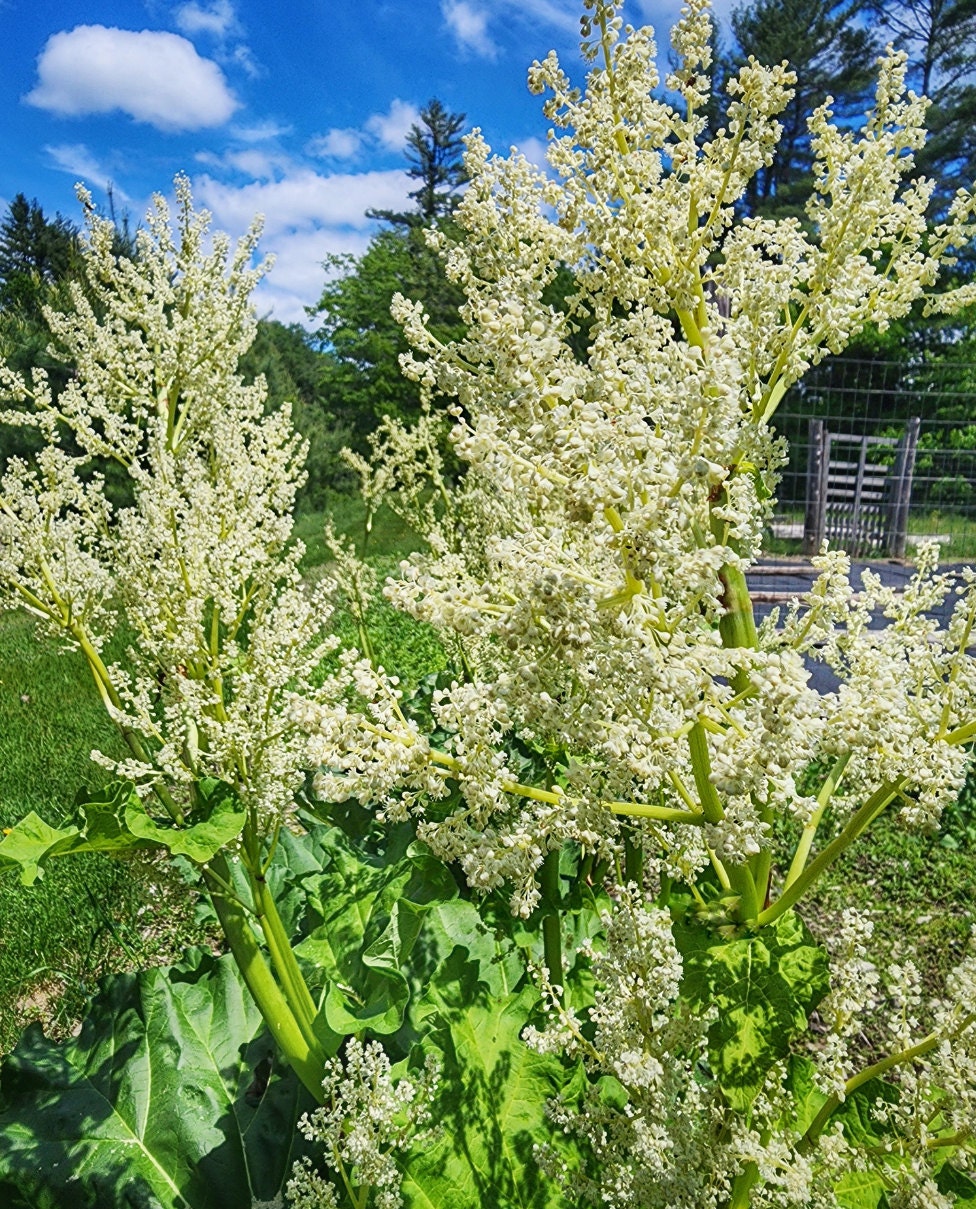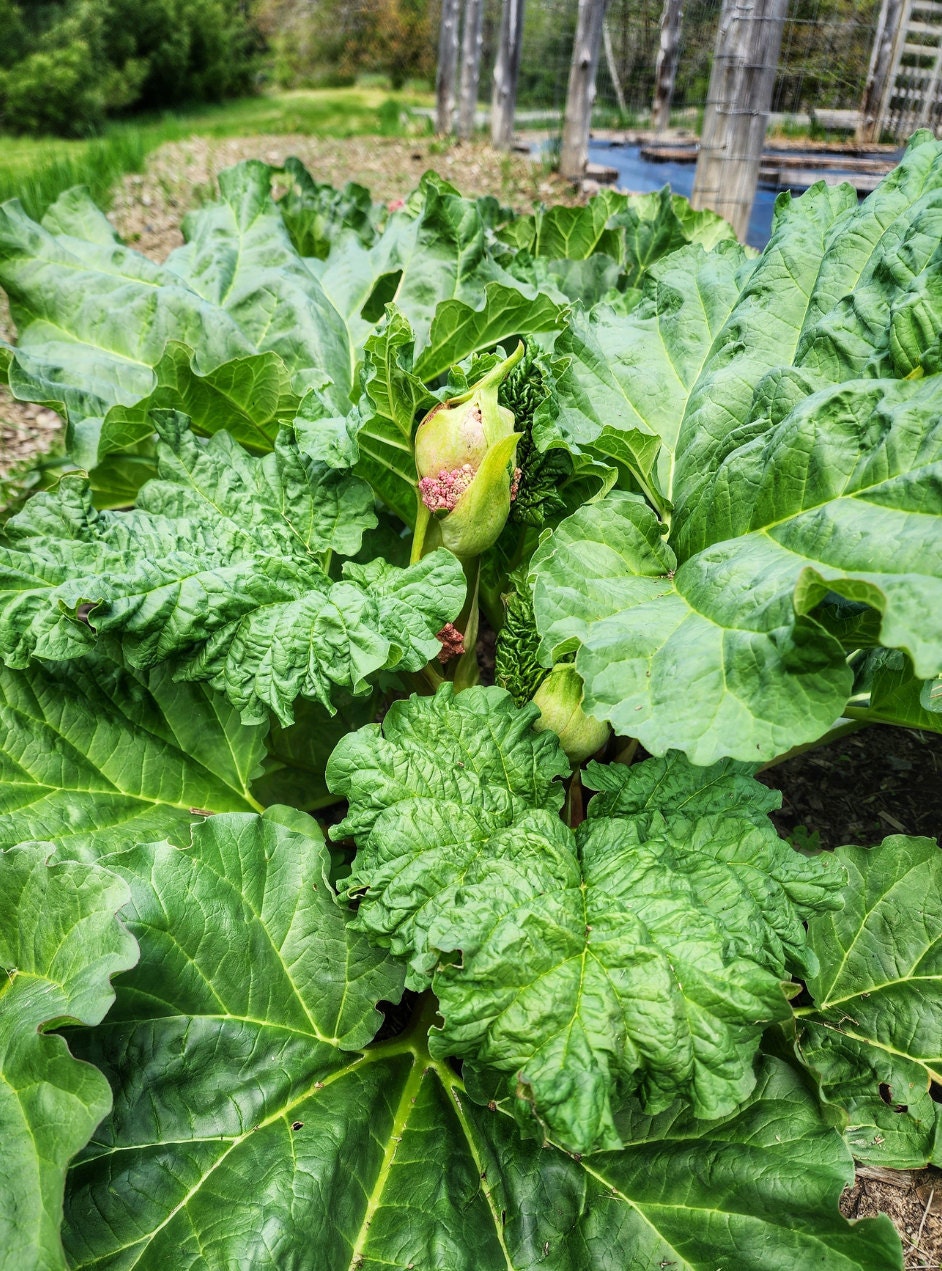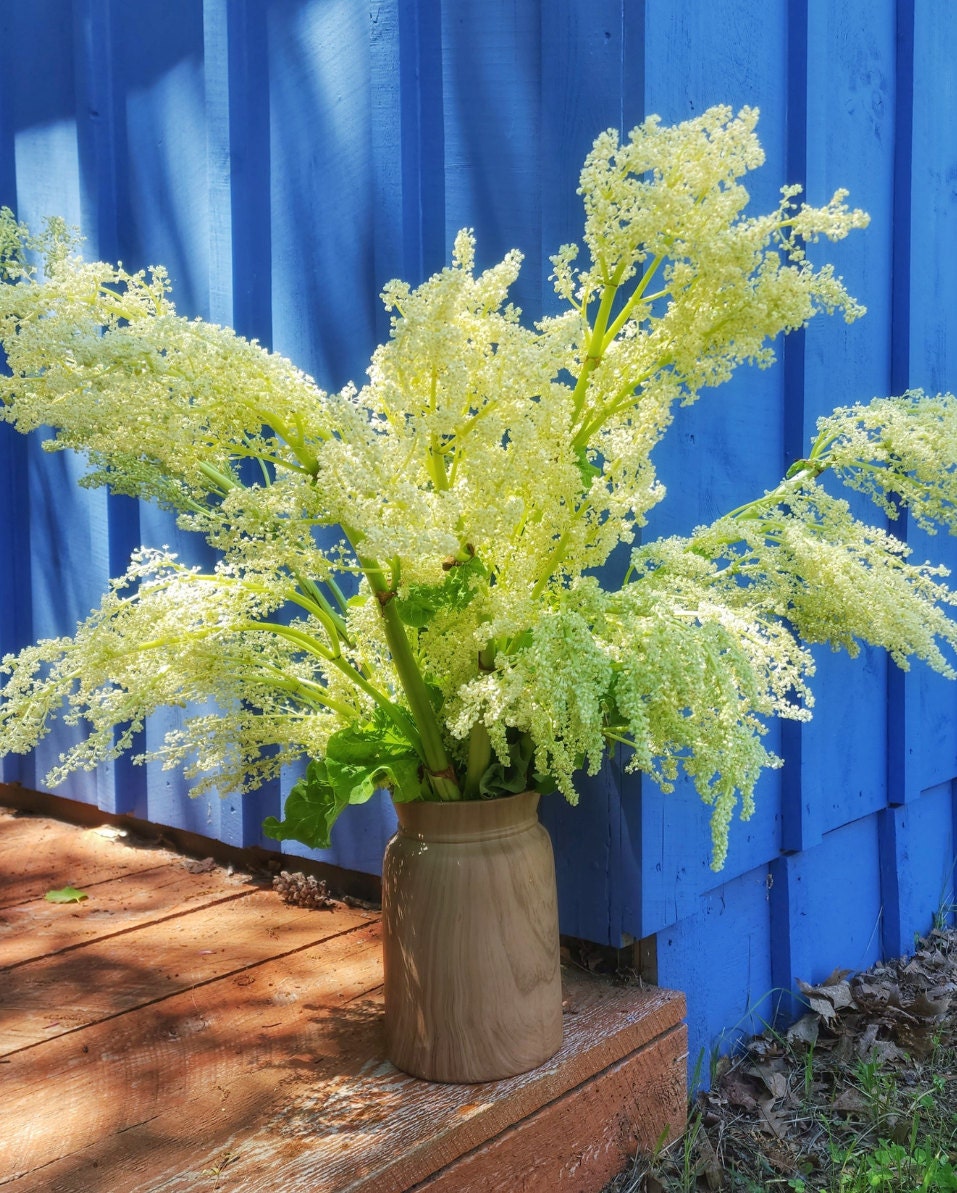
Growing rhubarb can be a delightful endeavor for any gardener, offering not only a visually striking addition to the garden but also a versatile ingredient in the kitchen.
Rhubarb thrives in Maine and our garden is no exception. The plant prefers well-drained soil rich in organic matter. Planting rhubarb crowns in early spring or late autumn provides the best start for these hardy perennials. Selecting a sunny spot with partial shade can encourage robust growth, ensuring a bountiful harvest of vibrant red stalks.
We recall seeing rhubarb seemingly growing wild on the farms of our childhood friends. We spent our youth eating rhubarb in pies, jams and straight from the garden. Quite tart.
Our thoughts on “wild” rhubarb evolved to an understanding that once established, rhubarb requires minimal maintenance, making it an excellent choice for both novice and experienced gardeners. Regular watering, particularly during dry spells, helps to promote healthy growth and prevents the soil from drying out. Mulching around the base of the plants can aid in moisture retention and suppress weed growth. Applying a balanced fertilizer in early spring can provide the necessary nutrients for vigorous rhubarb development throughout the growing season.
This season, we noticed flowers on our rhubarb plants. We find the flowers attractive, but opinions vary on whether to allow flowering, or bolting, as it is known.

Bolting typically occurs due to stressors such as temperature fluctuations or inadequate watering, although some rhubarb varieties are prone to bolting. If flowering occurs, you can choose to promptly remove the flower stalks as they emerge to redirect the plant's energy back into producing edible stalks. You may decide to harvest the flowers for a unique bouquet. Regular division of rhubarb crowns every few years can also help rejuvenate the plant and minimize the risk of bolting.
Harvesting rhubarb is a rewarding experience, typically beginning in the second or third year after planting. To harvest, simply grasp the stalk near the base and gently pull, twisting slightly to detach it from the plant. It's best to avoid harvesting more than two-thirds of the stalks at a time to improve vitality. The sizable leaves can be composted to optimize the plant's utility.
We think of rhubarb as an old-fashioned plant having never considered adding rhubarb to our traditional garden until two years ago. We made a dedicated space on the outer perimeter of the main garden for several plants. Just enough harvestable stalks to make several strawberry-rhubarb pies. We relive our childhood with each slice.

